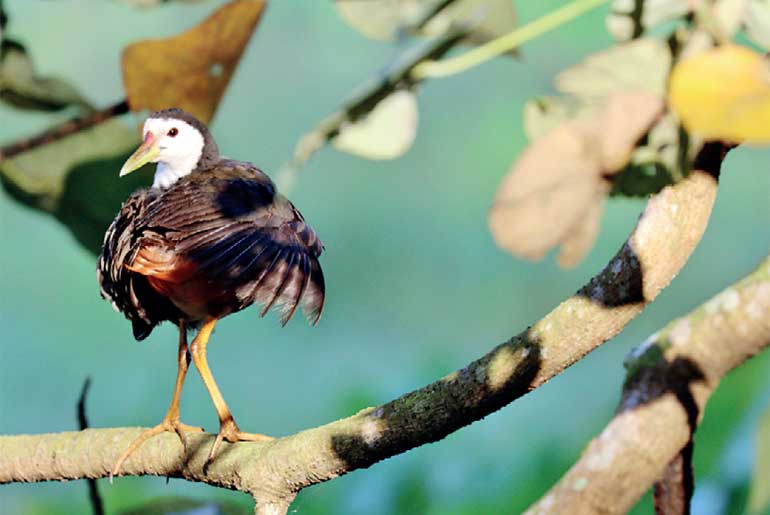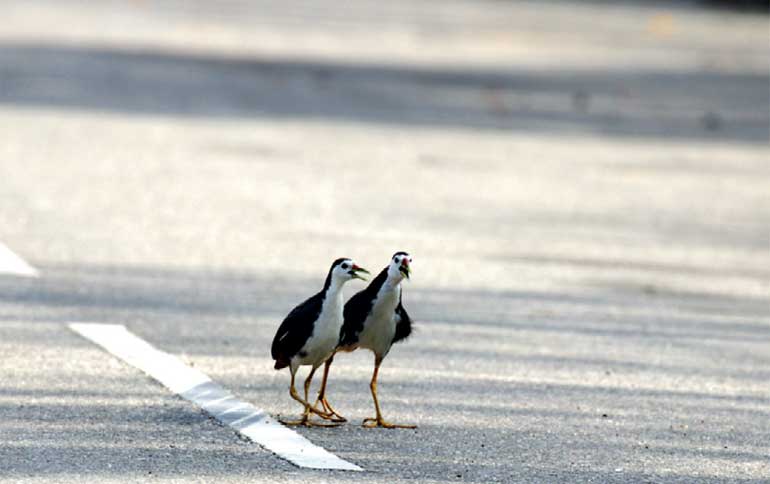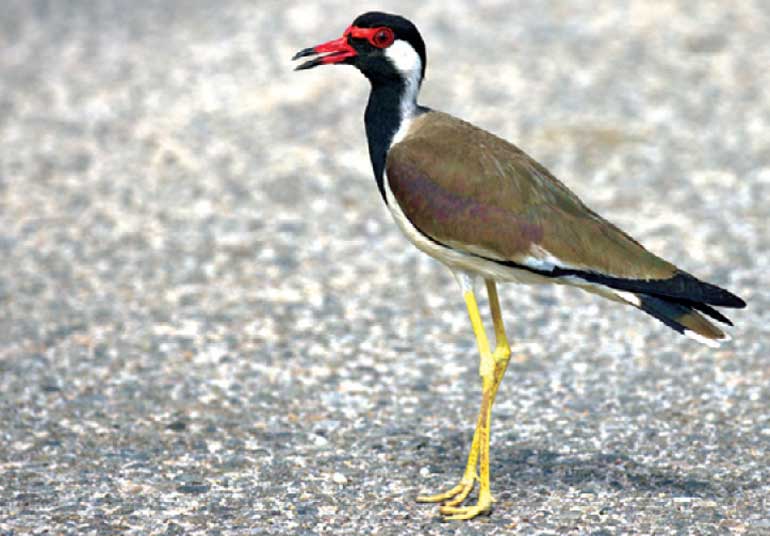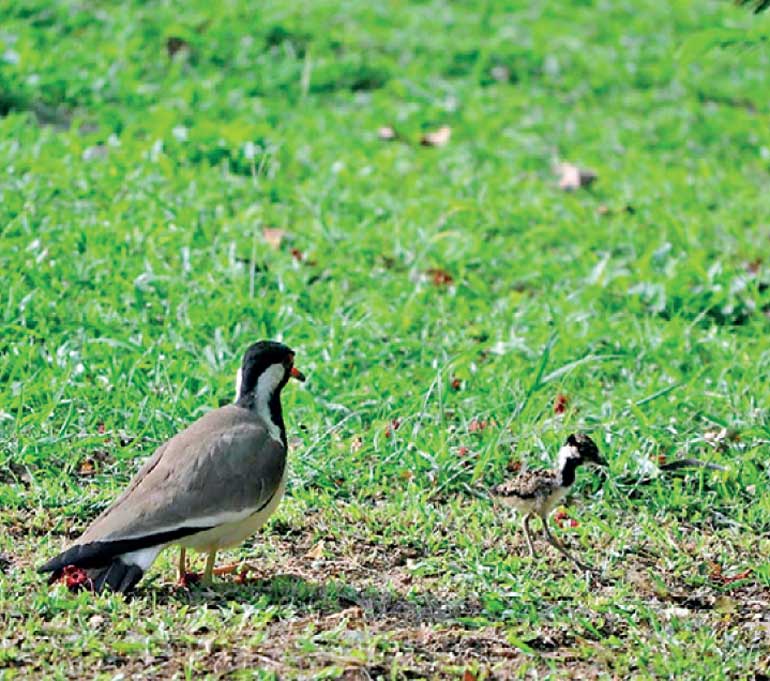Monday Apr 21, 2025
Monday Apr 21, 2025
Thursday, 23 February 2023 00:49 - - {{hitsCtrl.values.hits}}

Water-Hen preening
By Chandani Kirinde
Bird watchers living in urban surroundings are often struck by the presence of several species of birds who remain undeterred by the rapid increase in human settlements in areas, which were once large marshy lands, paddy fields, swamps, or thickets. In most suburbs, a keen bird watcher can easily spot at least 30 species of birds in the immediate environs without having to venture too far off visiting bird sanctuaries or parks.
One’s immediate surroundings is a good place to start for those new to bird watching/photography, a passion I cultivated during the extended lockdown due to COVID. Now that my newly found interest has whet my appetite, I’ve gone looking for rarer birds to more exotic locations around the island but the bird visitors closer to home have their own charm and observing them up close on a daily basis is a thrill as they can surprise you with new behaviour.
Two birds that most Sri Lankans are familiar with are the white-breasted waterhen (Korawakka in Sinhala, Neer Koazhi in Tamil) and the red-wattled lapwing (Kirala (S), Aatkaati (T). Their presence is most common near water bodies, paddylands, ditches and marshes and can be seen easily in the suburbs of Colombo or even in the metropolis.
Both birds make their presence felt by their distinct calls so you actually hear them before you see them. They are well adapted to the urban landscape and often come close to human habitats wandering into home gardens and walking along walls. A feeder kept for squirrels outside our home is often visited by both the waterhen and the lapwing keen for a few grains of rice as much as the squirrels.
Having observed the lapwing closely, one thing is clear. It is extremely protective of its young. From the time it lays eggs and they hatch, the female lapwing hovers around the young constantly and lets out a loud warning if anyone, man or animal, (mainly dogs) get too close. It reacts furiously when crows, cuckoos and other predators come hunting for their prey. The red-wattled lapwing is a ground bird with a short flight span often taking off with a loud cry to attack predators that come looking for its eggs or the young.
The protective mother can be seen hiding her young under the cover of her feathers when she senses a threat. I have found it easy to photograph the lapwings as long as I keep a safe distance. It strikes several poses, stands on one foot, preens itself and makes for attractive photographs with the dark pinkish ring around its eye particularly striking.
The white-breasted water hen too is a ground bird, often seen walking around confidently in urban settings. Like the lapwing, it too is a water bird and hence has evolved with long legs to help it wade through water, swamps and marshes. Although I have spotted it hiding inside bushy plants and tangled up creepers, I have yet to see the young. At dusk it often climbs medium sized trees and resides there, no doubt as a safety measure.
The sound of the water hens is distinct and drowns out almost all other bird noises. The bird is called korawakka in Sinhala, the name drawn from the krr kwak kwak …noise it makes, often continually for 10 to 15 minutes. Its upper body is greyish-black with face, neck and breast white with cinnamon coloured undertail.
These birds can be spotted year round and they’ve become such regular visitors to urban neighbourhoods, most people hardly give them a second look. That is unless you happen to be a bird watcher and are keen to observe any new antics they may exhibit.

Talkative water-hens

Red-Wattled Lapwing

Lapwing with baby